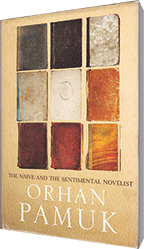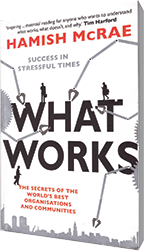 The Naive and the Sentimental Novelist; Orhan Pamuk; Penguin books; Price: Rs. 450; Pages 190
The Naive and the Sentimental Novelist; Orhan Pamuk; Penguin books; Price: Rs. 450; Pages 190
Right through the 20th century, several eminent writers including Jose Ortega Y. Gasset (1925), Walter Benjamin (1930), and in the latter half of the 20th century, Gore Vidal and Roland Barthes predicted the death of novel writing as a literary art form. In the 1970s the once very popular writer Tom Wolfe (Bonfire of the Vanities) predicted that “new journalism” would displace the novel. But these predictions have proved untrue. According to book trade sources, novels haven’t lost their narrative power and appeal, and outsell non-fiction by a factor of at least 5:1.
Turkish writer Orhan Pamuk who was awarded the Nobel Prize for literature in 2006, condenses 35 years of experience as a novelist into this slim volume that’s part autobiography, part literary criticism. A lecture series transformed into essays, it’s a learned discourse which deeply scrutinises the form, structure and purpose of great novels which he says become “second lives” for readers.
To this end, he delves into the minutiae of literary techniques, cross-referencing iconic novels and works of literary criticism by British, Russian, French, German, Turkish and Spanish writers and scholars, not to mention the ancient Greeks and a sprinkling of writers from a few other nationalities thrown in for good measure. Quite obviously Pamuk is extraordinarily well-read.
Two grand recurring metaphors — one comparing a novel to a museum in which the language and idioms as well as customs of a time, place and community are preserved; and the other comparing the litterateur who paints in words to a painter of landscapes — are employed to expound his theories. Structurally, the book is divided into six chapters, topped by an epilogue.
Though this work is short by the standards of literary criticism, it is no less effective for that. Indeed, its succinct and crisply edited text is a real pleasure to read.
The title is misleading, for it uses the English word ‘sentimental’ as a translation of sentimentalisch, a German word used by poet, historian and playwright Friedrich Schiller (1759-1805) to describe novelists who analyse their own work constantly as they write, as opposed to the ‘naive’ novelists who write by pure instinct. Clearly Pamuk’s allegiance is to the sentimental school, though he does express a touch of envy for the blithe creativity of the naïve novelist.
The compendium begins with the author exploring the fascinating duality of a writer immersing himself in a fictional world while being simultaneously aware that it’s make-believe. However, Pamuk goes further, analysing this intriguing paradox from the point of view of the writer.
He examines the commonplace phenomenon of readers often blurring the distinction between the writer of a novel and the protagonist, of how accomplished authors draw from a store of personal experiences and empathy, to portray emotions and events in words that seem authentic to the reader, and how a skillful sentimental novelist uses this awareness to draw in his audience. Pamuk also favours us with a mini-discourse on ‘meta-literature’, or what is written about novels, in which authors hint at hidden truths even as they seem to dissemble about their genuineness.
Perhaps the greatest contribution of these essays is that they provide aspiring novelists — and serious readers of this literary art form — acute insights into the craft of writing novels and evaluating them. Across 30 pages the author discusses the importance of character-development versus the importance of ‘painting’ landscapes which readers can imagine. In these two chapters, Pamuk’s ideas on the nature of the ideal novel are expressed unambiguously. He challenges the disproportionate emphasis of most novelists on the psychology and character of the hero, even as he accepts that the subjective viewpoint of the protagonist invests a novel with power and attraction. He also suggests that a novel’s “secret centre” must be neither too clear, nor too obscure. Such contradictions — hallmarks of great writing — are squarely addressed. At no point is Pamuk overwhelmed by the ambiguity of literature’s diffused scope or inherent subjectivity that makes it difficult and delightful for scholars.
While acknowledging the importance of plot and characterisation, the author also frankly acknowledges that great writers use their novels as media of self-expression. Pamuk vividly describes his feelings as a novelist wrestling with literary techniques and the reality-fiction conundrum. Moreover as a writer from an Islamic culture with its closed personal spaces, he writes of his embarrassment as well as the sense of freedom he experiences, as he works with a literary genre that attempts to throw light on the darkest, most secret corners of the human soul.
If Pamuk comes across as opinionated, looking down his nose at popular (as opposed to literary) novels from a lofty ivory tower, this is balanced by the light, airy style of these essays and the many passages about the experience of writing and reading novels.
On the whole, however, The Naive and the Sentimental Novelist is an engrossing read. Peppered with anecdotes, beautifully constructed and well researched, candid and concise, it makes literary criticism accessible to the average reader. As an analysis of novels, anyone who’s ever read a good book and loved it, or written one, will find something to interest them in this intelligent initiative.
Radhika Sangam
Success stories analyses
What works — Success in stressful times; Hamish McRae; Harper Press; Price: Rs.1,350; Pages 328
That author Hamish McRae is the principal economic commentator, associate editor of the London-based daily The Independent and also author of The World in 2020: Power, Culture and Prosperity (1994), is what works for What Works. From this brilliantly conceptualised collection of unlikely success stories from the worldover, he expects readers to derive “powerful common messages” for the development of societies, cities and slums, universities, and school examination boards. The purpose of the book which cites 20 illuminating examples, is to “illustrate how there are great ideas and innovations in Western societies, but also similarly great ideas and innovations in the emerging world, especially in China and India”.
Indeed innovation, development ideas and success stories from third world or emerging economies — from mobile telephony in Africa to India’s infamous yet highly productive “best slum” of Dharavi (Mumbai) — loom large in these perspicacious case histories. They have been carefully selected and elaborated, enabling readers to travel and explore instead of staying put within the confines of Ikea stores in Europe or walking around the Edinburgh Festival.
Inevitably, in these high-speed growth stories from around the world, there’s a lucid explanation in every chapter of what works. Be it the consistent vision of the Shanghai municipal corporation or how the property boom in Dubai is being perpetuated through no compromises with construction quality, or Harvard University’s clear awareness that diamonds are required to nurture diamonds.
Refreshingly, What Works is not a catalogue of simplified success stories. The author also highlights what could have gone wrong — and what may still blight — these global success sagas. Each case history narrates the story, sums up its lessons and speculates about what could go wrong. “While every single example here is one of something that’s been successful, every single story in some way encompasses threats that must be overcome or flaws that must be fixed,” writes McRae, warning against complacency.
For readers in India the causes of the ‘success’ of Dharavi described as a “location of choice”, and the hi-tech city of Bangalore (“a tale of triumph over adversity”) are likely to prove insightful. According to McRae, the fact that Dharavi (pop. 1 million ) is not just a dormitory slum but a thriving industrial centre with a GDP estimated at $1.6 billion (Rs.9,959 crore) with a centralised location in Mumbai which eliminates commuting, and Bangalore’s defence industry and education infrastructure are major factors behind their success.
Even more interesting are the other case studies elaborated in this engrossing work of investigation and analyses, spanning a range of phenomena. For instance, how has the metropolitan city of Copenhagen become a car-free paradise? How has Germany developed a world-beating MSE (medium small enterprises) industry? How does Harvard maintain its position as the world’s most admired university, and how has the Geneva-based International Baccalaureate Organisation emerged as the world’s most preferred school exam board?
All these and several other issues merit examination, and What Works provides uncommon insights into success stories which should — but unfortunately don’t seem to — interest India’s slapdash central planners, rote-schooled industry leaders and social scientists.
Dipannita Ghosh Biswas